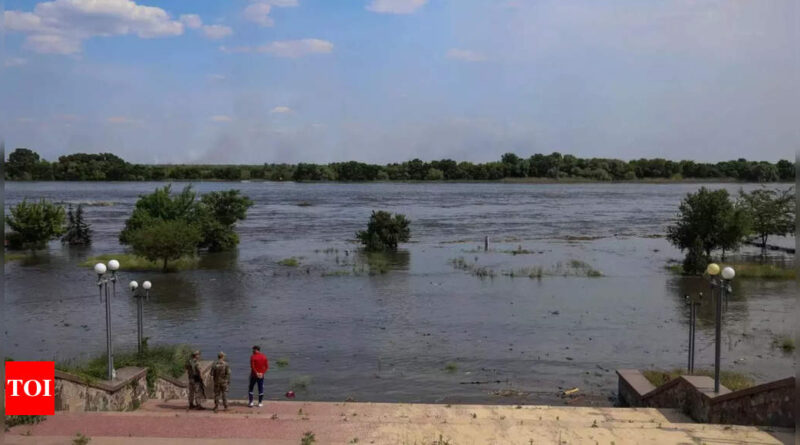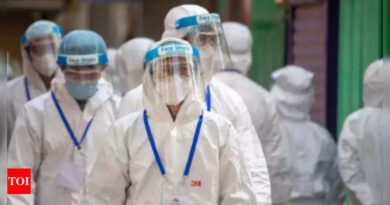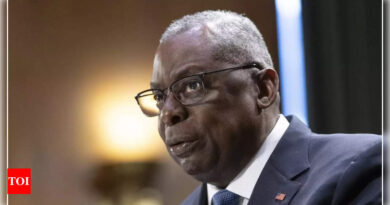Ukraine: Flood waters engulf homes in Ukraine as people flee – Times of India
Hundreds of exhausted people, some carrying only backpacks or pets, escaped inundated villages on Wednesday as a rescue effort pressed ahead across southern Ukraine, a day after the destruction of the Kakhovka dam unleashed another humanitarian disaster along the frontlines of the 15-month war.
Floodwaters engulfed streets and homes, sent residents fleeing on boats and dislodged roofs across dozens of communities on both sides of the Dnipro River, which divides the warring armies in much of southern Ukraine. A total of about 3,000 people had been evacuated in Russianand Ukrainian-controlled areas, according to officials on both sides, a fraction of the roughly 41,000 residents whom Ukrainian officials have said are at risk.
There were still no confirmed reports of deaths, and the scale of the disaster. Ukraine said the flood would leave hundreds of thousands of people without access to drinking water, swamp tens of thousands of hectares of agricultural land and turn at least 5,00,000 hectares deprived of irrigation into “deserts”. Russia imposed a state of emergency in the parts of Kherson province it controls, where many towns and villages lie in lowlands below the dam. In the town of Nova Kakhovka right next to the dam, brown water submerged main streets largely empty of residents. Over 30,000 cubic metres of water were gushing out of the reservoir every second and the town was at risk of contamination from the torrent, Russia’s TASS quoted the Russian-installed mayor, VladimirLeontyev, as saying.
Ukraine expects the floodwaters will stop rising by the end of Wednesday after reaching around five metres overnight, presidential deputy chief Oleksiy Kuleba said, adding that waters had reached their highest level in 17 settlements with a combined population of 16,000 people. “The sheer magnitude of the catastrophe will only become fully realised in the coming days,” UN aid chief Martin Griffiths told the UNSC. Targeting dams in war is explicitly banned by the Geneva Conventions.
“The whole world will know about this Russian war crime,” Ukrainian President Zelensky said in his nightly address, calling it “an environmental bomb of mass destruction”. Earlier he said Russia blew up the dam power plant from within. Kremlin spokesman Dmitry Peskov has accused Ukraine of sabotaging the dam to distract attention from the counteroffensive he said was “faltering”. The US said it was still gathering evidence about who was to blame, but that Ukraine would have had no reason to inflict such devastation on itself.
Floodwaters engulfed streets and homes, sent residents fleeing on boats and dislodged roofs across dozens of communities on both sides of the Dnipro River, which divides the warring armies in much of southern Ukraine. A total of about 3,000 people had been evacuated in Russianand Ukrainian-controlled areas, according to officials on both sides, a fraction of the roughly 41,000 residents whom Ukrainian officials have said are at risk.
There were still no confirmed reports of deaths, and the scale of the disaster. Ukraine said the flood would leave hundreds of thousands of people without access to drinking water, swamp tens of thousands of hectares of agricultural land and turn at least 5,00,000 hectares deprived of irrigation into “deserts”. Russia imposed a state of emergency in the parts of Kherson province it controls, where many towns and villages lie in lowlands below the dam. In the town of Nova Kakhovka right next to the dam, brown water submerged main streets largely empty of residents. Over 30,000 cubic metres of water were gushing out of the reservoir every second and the town was at risk of contamination from the torrent, Russia’s TASS quoted the Russian-installed mayor, VladimirLeontyev, as saying.
Ukraine expects the floodwaters will stop rising by the end of Wednesday after reaching around five metres overnight, presidential deputy chief Oleksiy Kuleba said, adding that waters had reached their highest level in 17 settlements with a combined population of 16,000 people. “The sheer magnitude of the catastrophe will only become fully realised in the coming days,” UN aid chief Martin Griffiths told the UNSC. Targeting dams in war is explicitly banned by the Geneva Conventions.
“The whole world will know about this Russian war crime,” Ukrainian President Zelensky said in his nightly address, calling it “an environmental bomb of mass destruction”. Earlier he said Russia blew up the dam power plant from within. Kremlin spokesman Dmitry Peskov has accused Ukraine of sabotaging the dam to distract attention from the counteroffensive he said was “faltering”. The US said it was still gathering evidence about who was to blame, but that Ukraine would have had no reason to inflict such devastation on itself.




